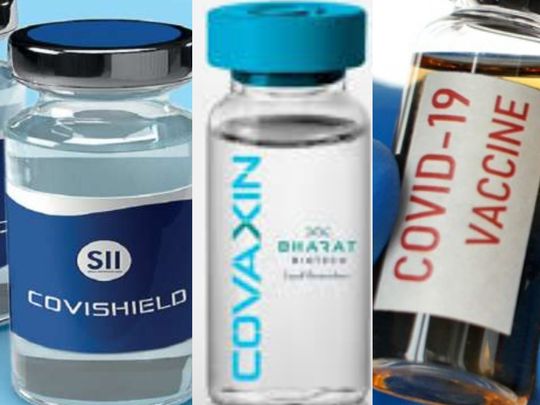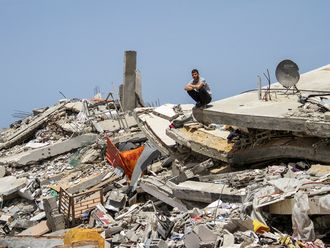
Indian regulators yesterday allowed emergency usage of two vaccines in a major boost to global fight against Coronavirus, a move almost immediately welcomed by the World Health Organisation.
The first, developed by AstraZeneca and Oxford University has already been given green light and rolled out in UK and other countries, is cheaper to use and suited for developing markets as the shots require less complex handling and administration. The second vaccine — COVAXIN — is developed by Indian company Bharat Biotech in partnership with Indian Council of Medical Research.
Both the companies are able to produce hundreds of millions of dosages, matching India’s plans to administer 300 million shots free of charge to emergency and frontline workers in the first phase this year.
Officials said both the vaccines will be administered in two doses and stored at low temperatures, two major challenges that will test India’s ability to mass inoculate people on a vast landscape. It is not immediately clear what intervals between the shots are being recommended but some reports said vaccines will be given at four weeks apart.
The success of India’s vaccination programme will depend on maintaining the integrity of cold chains and recipients’ compliance with dosage protocols
AstraZeneca/Oxford shot, already approved in Britain, Argentina and El Salvador, will be produced by India’s Serum Institute and has an efficacy rate of up to 70.42 per cent. However, no efficacy data has been released for Bharat Biotech’s COVAXIN and will likely face stricter protocols.
While Prime Minister Narendra Modi welcomed the approvals as a “decisive turning point”, opposition Congress party asked the government to explain why mandatory protocols and verification of data has been dispensed with for COVAXIN, demanding release of phase three trial data.
Public trust is critical
In a world rife with disinformation and rumours, public trust is critical in mass vaccinations of adults and elderly. That is why governments must be extra cautious and act with full transparency while granting such approvals.
In this case, phase three clinical trial numbers of COVAXIN must be released so that the data can be reviewed by global health experts and the efficacy rate determined. Mass inoculations involve mammoth logistical challenges with potential side effects and in the absence of scientifically proven data, this can exercise can actually weaken defences against the virus.
Still, India’s move to roll-out the vaccine for emergency workers is a big step and will contribute to global efforts in defeating the disease in a big way. On Saturday, India conducted a dry run for the vaccine in several states, an exercise to test the system’s ability to accurately administer the dosages. The success of India’s vaccination programme will depend on maintaining the integrity of cold chains and recipients’ compliance with dosage protocols.








